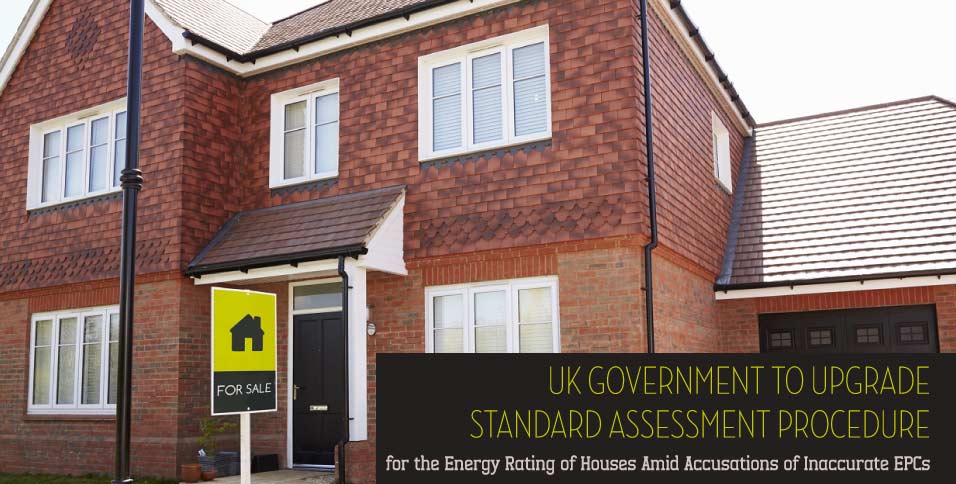Houses in the UK that are marketed for sale or to let must by law have an Energy Performance Certificate. These certificates can only be produced by accredited domestic energy assessors, or SAP assessors. SAP, which stands for Standard Assessment Procedure, is in the UK the government-approved method for calculating the energy efficiency of houses.
The current SAP assessment methodology for existing dwellings has existed since 2007. Millions of homes in the UK property market have been assessed using the current SAP calculation method, which has been criticized by many SAP assessors as inaccurate.
The New SAP Calculation Methodology
The UK government is introducing a new assessment methodology for the energy rating of existing dwellings called RdSAP10. This is the first major update of the assessment process.
The reviewed methodology is being introduced by the government to address and remedy issues such as carbon emissions and climate change in an attempt to make houses in the United Kingdom more energy efficient.

Alex Papaconstantinou, founder of nationwide SAP Agency epc4less.com, hopes that homeowners and landlords will appreciate that the new methodology can work in their favour.
What Are The Changes in SAP Calculations?
The new energy assessments are becoming more detailed and will include new parameters:
- Addition of new age bands
The current SAP calculation method can only consider homes built as recently as 2012. In the new SAP assessment, age bands of homes now range from A, for buildings erected before 1919, to M for buildings erected from 2023 onwards. These new age bands will automatically affect the thermal transmittance values (aka U-values) assigned to each house as part of the SAP calculation process.
- Inclusion of heated basement areas
Heated basements will now be included in the new assessments and U-values will again be allocated automatically, based on the age of the building.
- New external wall structures: Curtain walls
Curtain walls, such as glass walls, are being introduced as a concept and several types of alternative walls are now an option when evaluating the energy efficiency of a dwelling. Wall insulation values are introduced by the new EPC methodology based on the new age bands explained above. U-values of external walls will be either evidence-based, or automatically assumed, as default values by the assessors’ software.
- Window measurements
Windows will be defined by the area of glazing and need to contain a glazing amount of 60% or more. Glazing ages have been redefined. All external doors and openable windows per building part will need to be examined for the presence of draughtproofing. Actual U-values, g-values, and frame factors of windows will be automatically allocated by RdSAP10.
- Room in the roof types
Rooms in roofs refer to habitable areas, such as bedrooms, in the attic. New measurement requirements have been introduced for rooms in roofs for improved assessment accuracy.
- Ventilation changes
In the new SAP calculation methodology the introduction of ventilation options is an important change. The new assessment process will detail the number of ventilation systems within the home and include the option of air pressure test. Air pressure tests need to be performed in all new dwellings in the UK but the new SAP calculation methodology gives this option for existing dwellings as well.
Will Energy Performance Certificates cost more?
There will be more work for the energy assessors in the SAP calculations of each dwelling. Inevitably, the cost of an energy assessment will increase. However, the government believes that the changes described above will reflect in the accuracy of Energy Performance Certificates (EPC) as well as in the validity of recommendations for energy improvements.
Also Read: The Impact of Interest Rates on Equity Release: Navigating Financial Markets in the UK
















